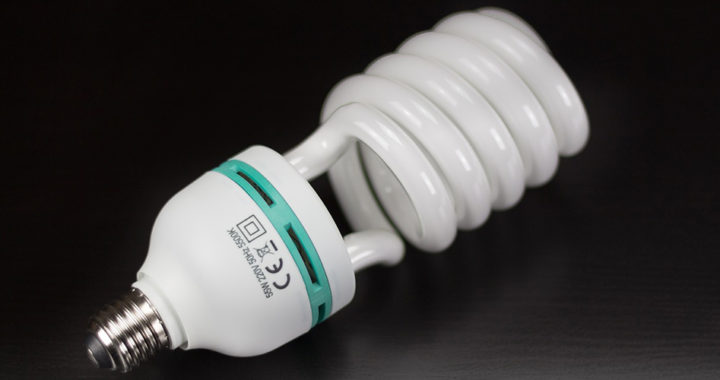A fluorescent lamp is a type of a gas-discharged electric lamp that contains and uses low-pressure mercury vapor and an inner coating of fluorescence material such as phosphor to produce visible light. To be specific, introducing an electric current excites this mercury vapor that in turn, results in the emission of ultraviolet radiation. This UV light causes the fluorescent material to glow.
The development of fluorescent lamps during the 1890s and 1900s and their subsequent commercialization beginning 1920s have led to direct competition against another type of electric lamp: the incandescent lamp. However, due to their advantages, fluorescent lamps have become more popular in residential and commercial uses beginning 1990s.
Advantages of fluorescent lamps
1. More energy efficient than incandescent lamps: When compared to incandescent lamps, fluorescent lamps can produce the same amount of light or lumens using lesser energy input. Residential and commercial grade fluorescent tubes and bulbs, including compact fluorescent lamps or CFL bulbs, can produce 50 to 100 lumens per watt. Meanwhile, a typical incandescent bulb produces 16 lumens per watt. This advantage translates to energy efficiency than in turn, leads to reduced electricity consumption and cost.
2. Longer operational lifespan: Another advantage of fluorescent lamps over is their lifespan. A typical fluorescent bulb will last 10 to 20 times longer than an incandescent bulb. Specifically, fluorescent lamps have an operational lifespan of 6000 to 15000 hours while incandescent lamps only have 1000 hours. Due to their longer operational duration, one of the notable benefits of using fluorescent lamps involve reduced time and cost associated with replacement and maintenance.
3. Better light diffusions and distribution: Fluorescent lamps are bigger light sources than incandescent lamps. Furthermore, most fluorescent bulbs or tubes readily diffuse light that results in better distribution of illumination within a particular area. In contrast, incandescent lamps are smaller light sources, and they produce undiffused light as evident from glares and uneven illumination.
4. Less heat emission: Incandescent lamps generate too much excessive heat because they consume too much energy input. Hence, another advantage of fluorescent lamps is less heat emission due to their efficient energy consumption. Typical fluorescent bulbs such as CFLs convert of 22 percent energy input to visible light while incandescent lamps only use 5 percent of energy input to produce visible light and the remaining 95 percent is converted into heat. This advantage translates further to other benefits such as comfort and reduced cost from air conditioning and ventilation.
Disadvantages of fluorescent lamps
1. More expensive: Fluorescent lamps are relatively more expensive than incandescent lamps because they are more complicated to manufacture. However, considering their energy efficiency and lifespan, they are arguably more economical in general. Note that LED lamps are more expensive, but their price is expected to go down near the level of fluorescent lamps due to better manufacturing processes and increasing demand.
2. Health and environmental issues: A notable disadvantage of fluorescent lamps involves susceptibility to chemical leakage that can contaminate the environment and affect the health of exposed organisms, including humans. A broken bulb can lead to leakage of a small amount of mercury. Aside from chemical hazards, fluorescent tubes and bulbs with magnetic ballasts normally flicker. This flickering coupled with UV emission might be problematic for individuals who are sensitive to light, especially those with autism, epilepsy, chronic headache, lupus, and vertigo, among others.
3. Susceptibility to degradation: Several factors can lead to inefficiency and wear and tear of fluorescent tubes and bulbs. A considerable limitation involves switching frequency. Lamps that are frequently switched on and off rapidly age due to the erosion of the electron-emitting surface of the cathodes. Operating temperature is another limitation of fluorescent lamps. Below-freezing temperature might render these lamps inoperable. Note that because they emit less heat than incandescent lamps, they are unable to melt off snow and ice build up.
4. Problems with dimming: Light fixtures based on fluorescent lamps cannot be connected to dimmer switches made for incandescent lamps. This is due to the physical and operational differences between these two types of electric light. Special dimming ballasts and dimmer switches are required to make fluorescent tubes and bulbs dimmable.
5. Not a better alternative than LED lamps: A comparison with light-emitting diode or LED lamps will bring forth the limitations of fluorescent lamps. Although both types of electric light are more energy efficient and have longer lifespan than incandescent lamps, LED lamps take these advantages to another level. For example, a particular type of LED bulb may require 9 watts to produce 900 lumens while a CFL may require 15 watts to produce 600 lumens. LED lamps also have an operating lifespan of 30000 to 50000 hours.
Conclusion: Benefits and limitations of fluorescent lamps
When compared to incandescent lamps, fluorescent lamps have notable advantages and benefits that revolve around energy efficiency and longer lifespan, that further translate to cost-efficiency. It is more economical to buy and use fluorescent lamps than incandescent lamps. However, the disadvantages and limitations of fluorescent lamps become more noticeable when compared to LED lamps.
